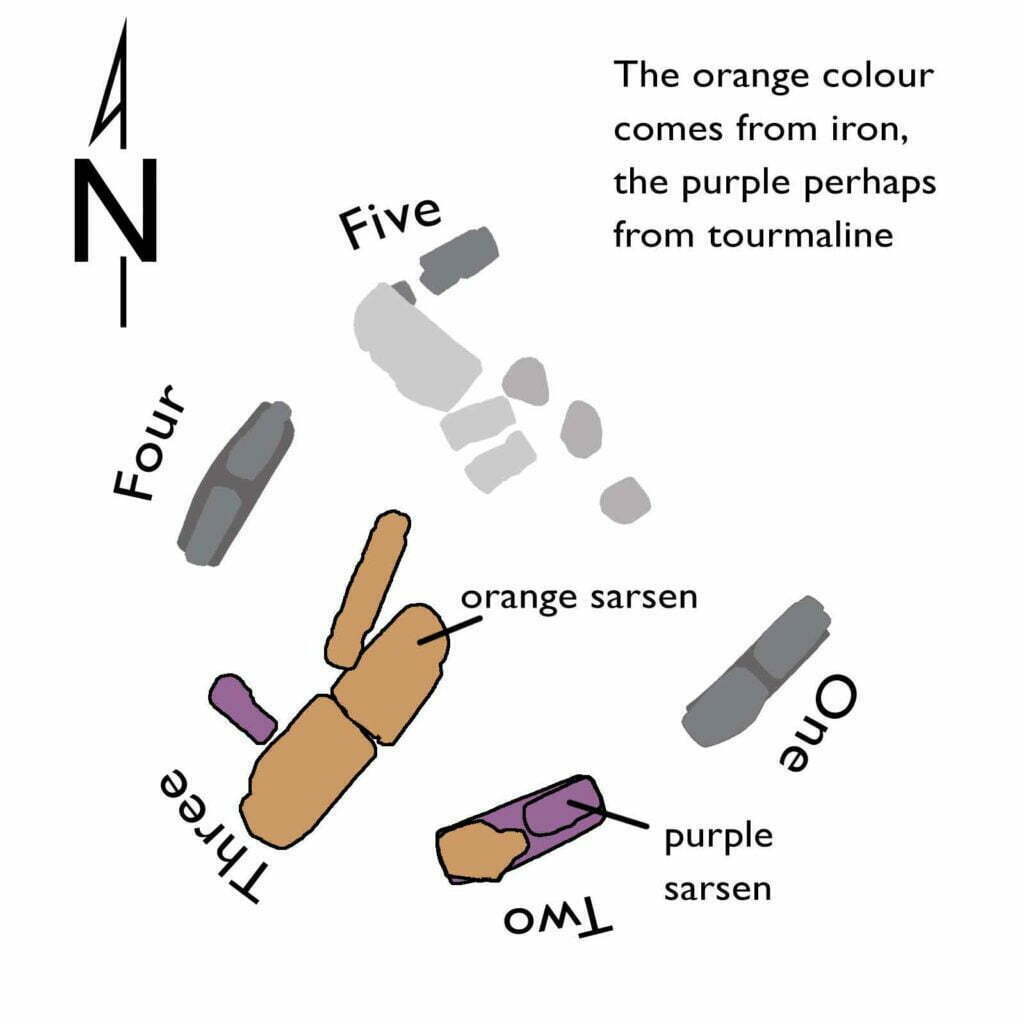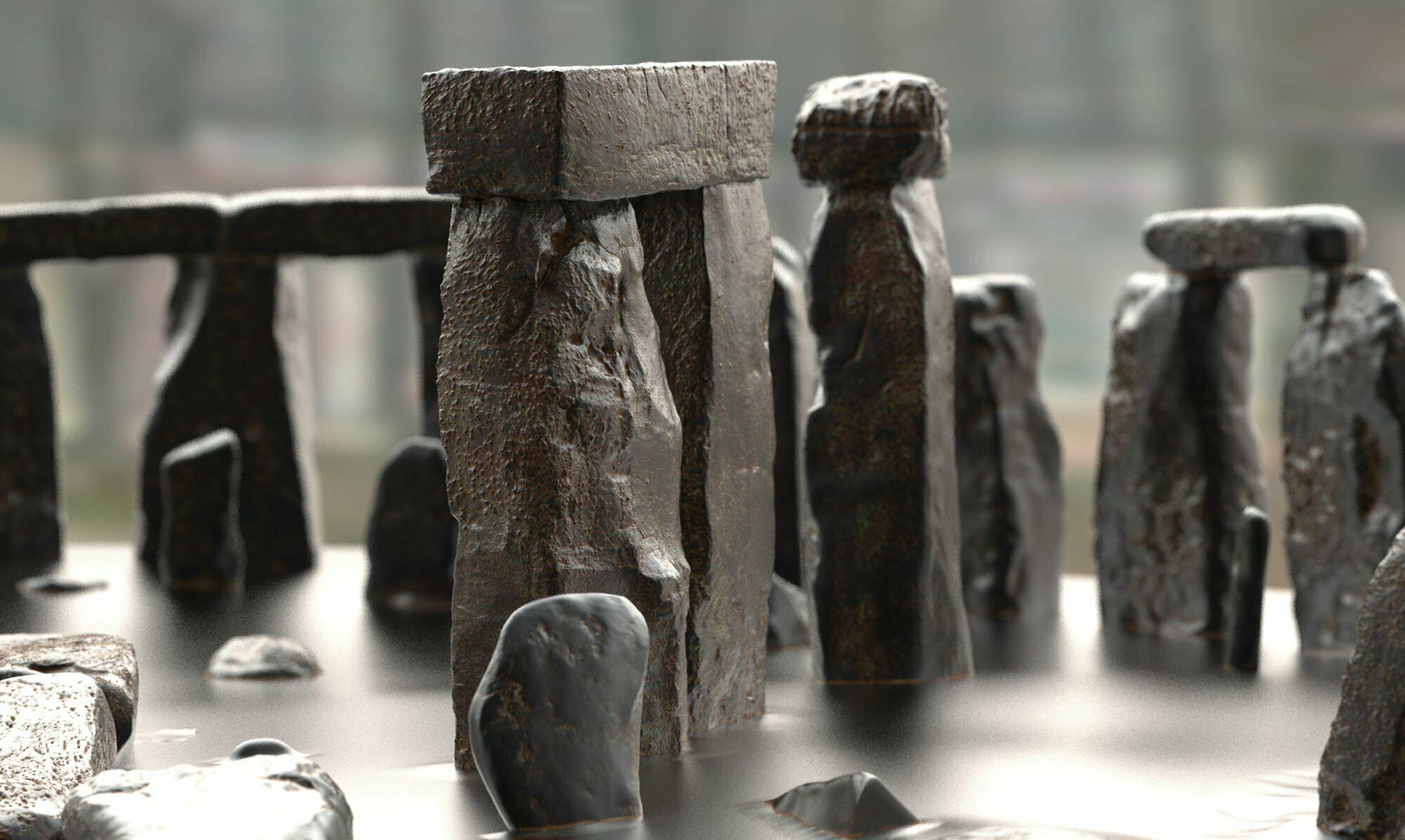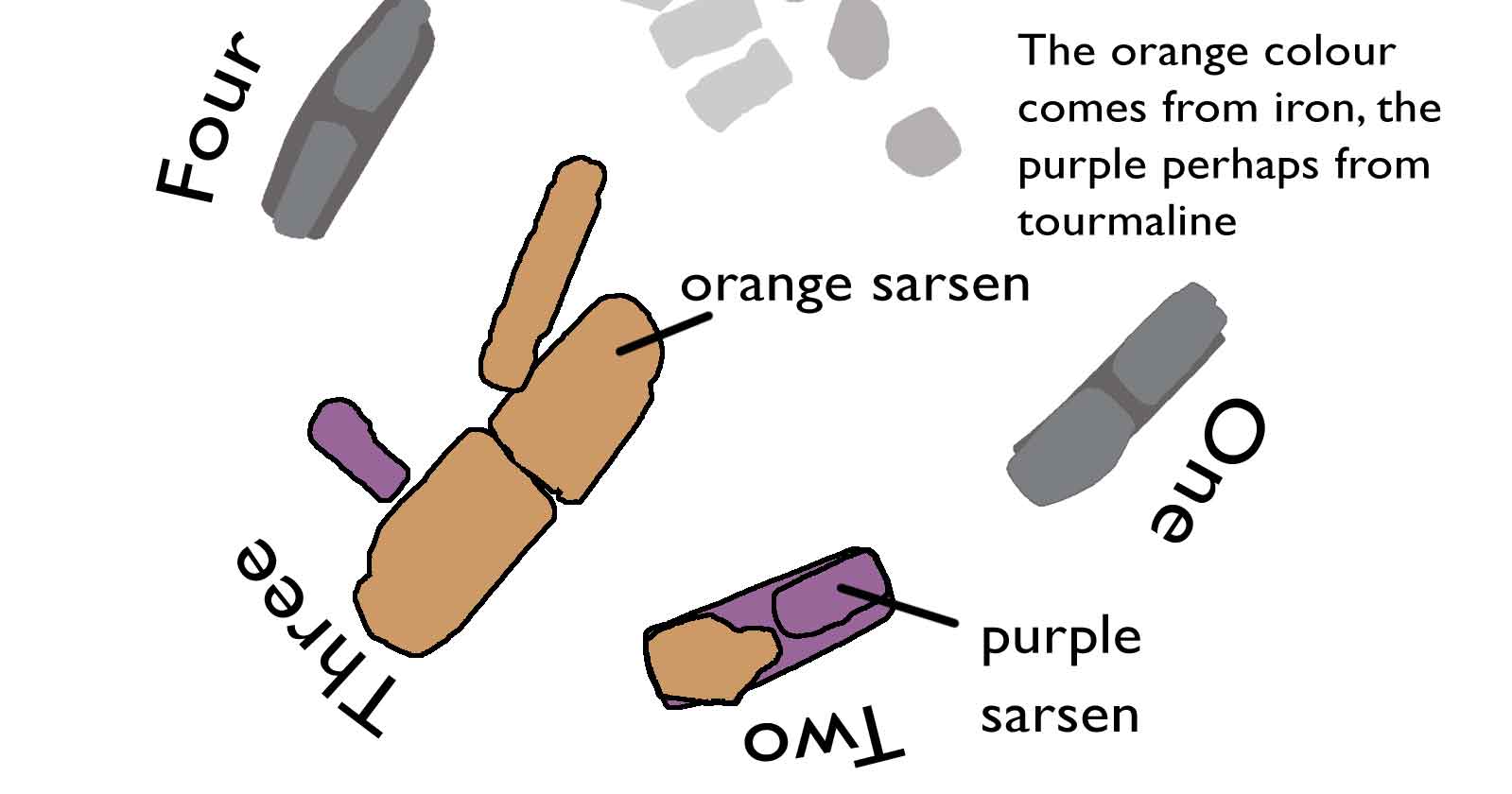There are at least two types of sarsen at Stonehenge. These guys, a professor and a doctor, are going to fingerprint the debitage and the still ‘wild’ sarsens around and about south England to connect the dots.
Hopefully, we may get to learn if some are really, really local, if there was ‘something’ there before mankind. As well, if stones came from all points on the compass or just one spot, currently thought to be Marlborough Downs, about 15 miles NNE. But we have to wait until March 2019.
It’s a shame (perhaps) they’ll not take boring samples from each sarsen. It would be fab to know if, say, that the northern sarsens came from the north, the southern from the south. If there was some kind of pattern, some logic.
And, boy-oh-boy wouldn’t it be fabber still to fingerprint the bluestones! We know that most are from West Wales, the volcanics, but some are sandstones, most notably the Altar Stone perhaps from The Lower Old Red Sandstone Senni Beds.
They crop out in South Wales from west of Kidwelly to the Welsh Marches and include widespread outcrops in the Black Mountains of Powys, Gwent and Hereford and Worcester.
The exact geographical location of the source bed, whilst it would be very interesting to know, is perhaps not as significant as knowing that the source for the Altar Stone is far from either the Preseli Hills and its environs or Milford Haven and that the rock does not appear to have any innate macro- or microscopic characteristics that mark it as special.
From A detailed re-examination of the petrography of the Altar Stone and other non-sarsen sandstones from Stonehenge as a guide to their provenance.
by R.A.Ixer and P.Turner
Hmmmm! A dull, fine-grained, buff-pale grey sandstone. Not from the same area as the other bluestones. Rob Ixer is my fav geologist 😉



